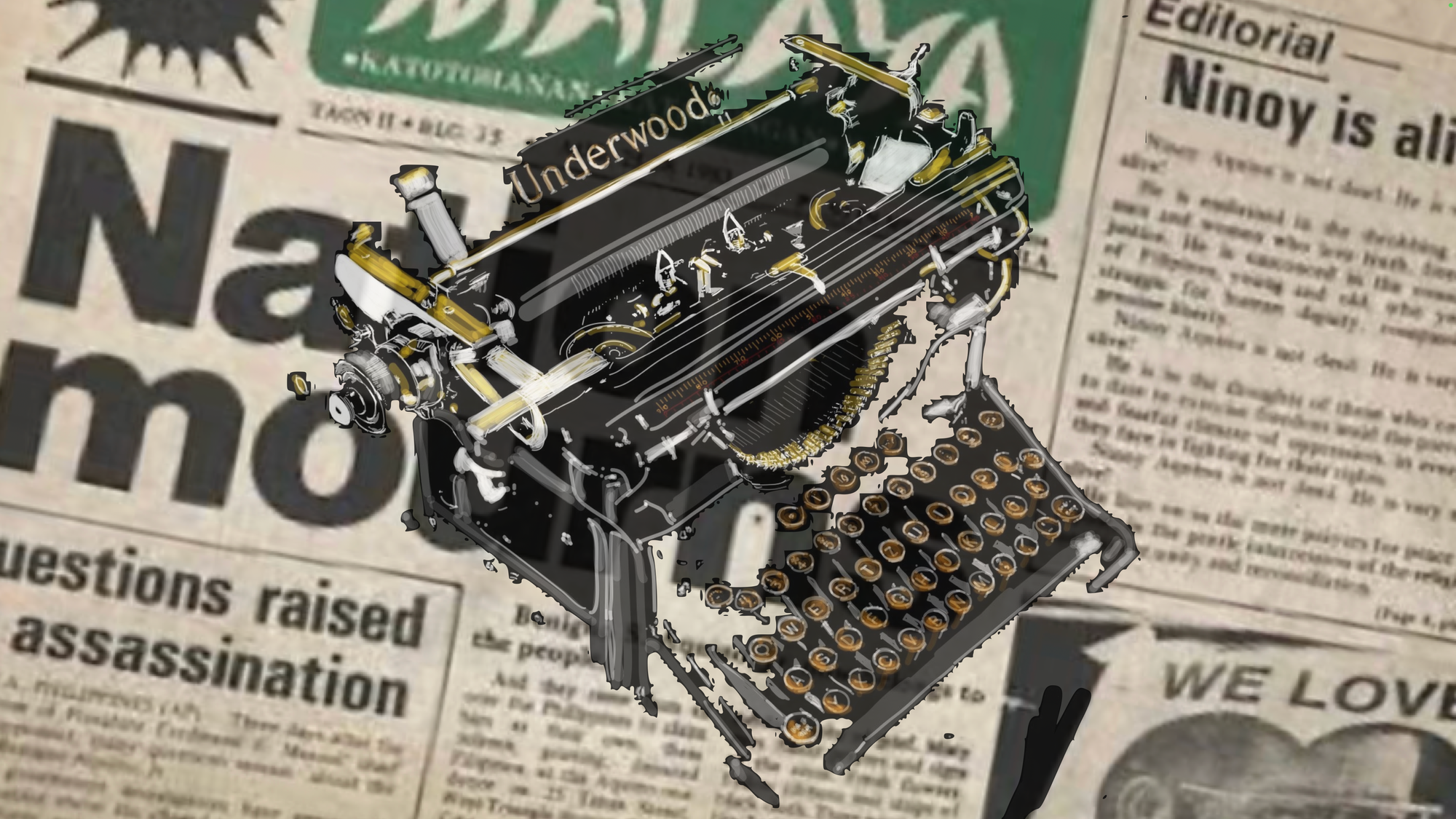
By Joey Salgado
The years 1983 to 1986 were years of disquiet, even in the newsrooms of the country’s major newspapers.
After the August 1983 airport murder of former senator Benigno Aquino Jr., the gatekeepers of information, the crony publishers and their editorial overlords, exerted greater control over news content.
Vexing and unflattering stories that would embarrass the martial law regime were kept out of the papers. “Objectivity” was conveniently invoked to justify the regime’s efforts to dominate the national discourse. News stories were slanted to favor a single perspective of social, political and economic issues.
The newsrooms became hostile spaces for a new breed of journalists. In journalism school and in their campus papers, these young reporters were taught and trained to write accurately, without embellishing the facts. They were told, and learned by doing, that their first and only responsibility was to their readers, to whom power must be monitored independently and made to account.
Ang Pahayagang Malaya, published by Joe Burgos Jr., a former reporter for the pre-martial law Manila Times, gave them the outlet and the opportunity to practice real journalism.
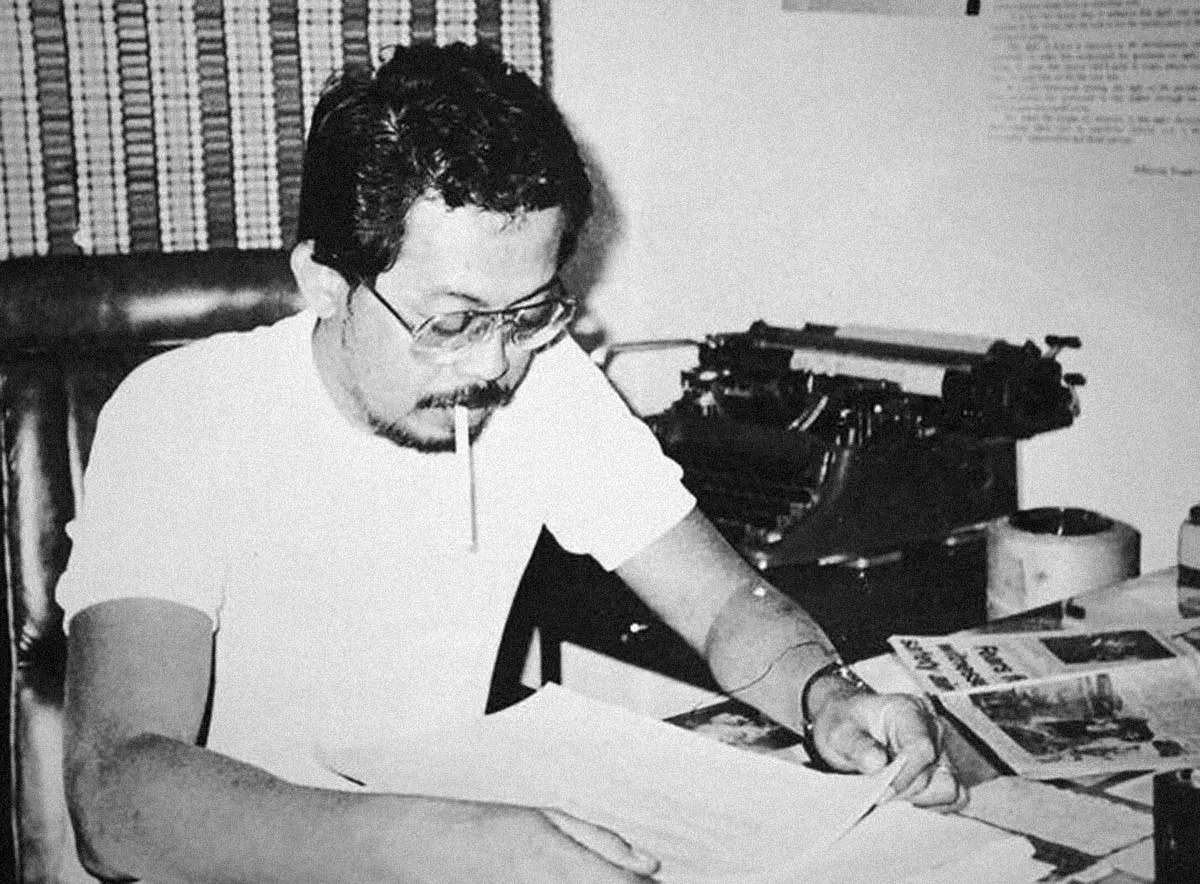
Malaya began its daily run on January 17, 1984. Malaya had been in existence earlier, as an occasional Pilipino tabloid and a sister publication to We Forum. In 1982, the regime closed down We Forum, arrested Burgos and several others, and charged them with subversion over a series of articles questioning the authenticity of former president Ferdinand Marcos’ war medals. After his release, Burgos decided to transform Malaya into an English-language newspaper.
Edith Burgos, Joe’s widow, recalls that at the start, Malaya was not openly sold in the streets. “Joe with my eldest son would go out to the streets, would go to Quiapo, or to Luneta and yung may lakas ng loob na tanggapin yung dyaryo, kukunin sa amin tapos ilalagay nila sa ilalim ng mga ibang dyaryo,” she says. This had to be done, she adds, otherwise the newspaper would be confiscated by a policeman who would always appear as soon as Burgos and his son dropped off the copies.
To fill up the pages, Burgos would often hang around the National Press Club (NPC), soliciting stories from his newsman friends. These stories were the ones discarded by their editors.
“Nung napatay si Ninoy (Aquino), tumawag si Joe, pahingi naman istorya. One-man team sya non,” recalls Joel Paredes, then a reporter for the Times Journal. But Burgos had a vision for Malaya. He wanted it to be a daily newspaper.
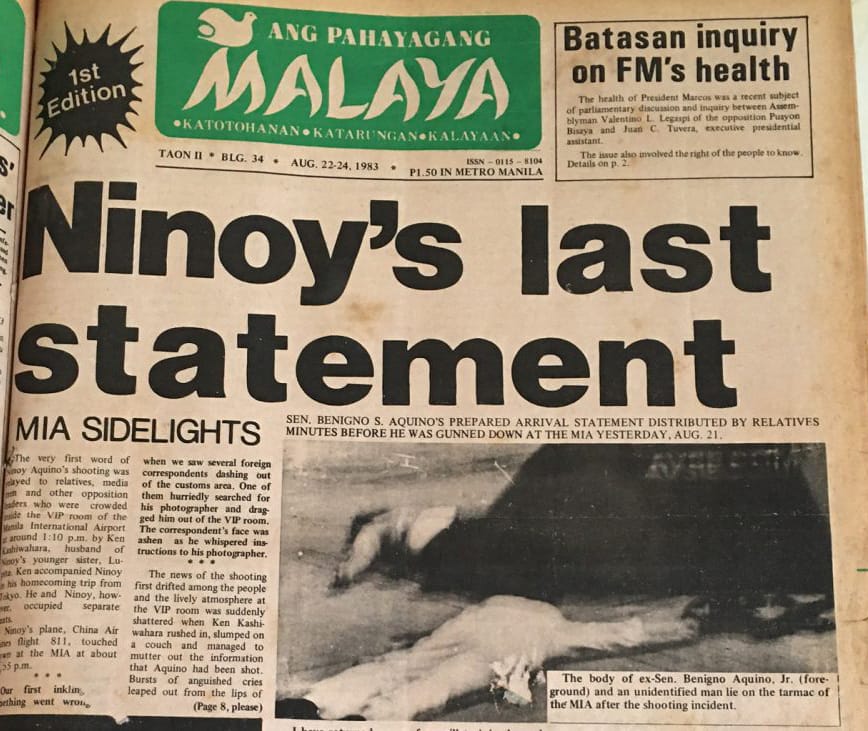
An Unlikely Endorser
At around the same time, Paredes and some of his fellow employees at the Times Journal were feeling the heat from their publisher, Benjamin “Kokoy” Romualdez, the former First Lady’s brother, for organizing a union. Despite taking legal steps, and localized actions like silent protests, Romualdez refused to recognize the union. Instead, punitive actions were imposed on union members.
One week after the Aquino assassination, Paredes says the union leaders learned of management’s plan to terminate all unionists.
Lourdes “Chuchay” Fernandez, with several union officers, sought the advice of then Labor Minister Blas Ople on possible courses of action. One piece of advice resonated: Quit the Journal and join Malaya.
Fernandez and Paredes then talked to Burgos. "Joe, tatanggalin kami. Gusto mo ba talaga mag-daily?,” Paredes recalls asking Burgos. The intrepid publisher replied, “Kaya ba natin?"
Fernandez, Paredes, and several union members from the Journal’s editorial and production departments formed the backbone of Malaya’s expansion. Paredes was part of Malaya’s Editorial Board before his designation as chief of reporters. Fernandez would become Malaya’s first editor-in-chief, and the first woman to occupy such a position in a national daily. The entry of the Journal unionists addressed Burgos’ initial worries about Malaya’s viability as a daily newspaper.
Paredes says it took three months to set up Malaya’s daily operations. By November 1983, Burgos was confident that they can pull it off.
Malaya’s editorial team expanded quickly.
Rita Festin was then a fresh college graduate and a Malaya reader. She was intrigued by an ad in Malaya which read, “Are You Brave Enough?”. She applied and was accepted.
“I was assigned sa Malacañang to get news releases kasi ako yung may kotse, “ she recalls. While Palace reporters from the big three newspapers - Daily Express, Manila Bulletin, and the Journal - and the other publications had larger desks at the Malacañang press office, Festin was given a small corner desk where she waited for the daily media releases.
These releases were printed without any editing. Malaya also carried stories published by the Philippine News Agency (PNA), the state-owned wire service.
Desiree Carlos, former reporter for the Daily Express, says the first question Burgos asked her was: “Alam ba ng magulang mo na nandito ka?” She replied: “Hindi.”
Joel Saracho had just resigned from his job as an assistant stage manager for Rolando Tinio’s Teatro Pilipino at the Cultural Center of the Philippines (CCP) when he was interviewed by Burgos.
He remembers facing the bearded Burgos in an old house turned into an office somewhere near the Quezon Institute on E. Rodriguez Avenue.
“What can you write about?” Burgos asked him. “Anything,” Saracho, then 22, replied.
‘“P—ang ina! Nobody writes about anything. You should write about something,” he bellowed in Filipino which makes it more real and threatening,” he recalls.
‘Handa ka bang makulong?’
The applicants were asked, “Handa ka bang makulong?” and “Handa ka bang mamatay?” If they answered yes to both questions, they were hired.
Carlos recalls that reporters were given a piece of paper. On it were written the names of lawyers to call in case they were arrested. They were human rights lawyers Joker Arroyo, Rene Saguisag, and Jojo Binay.
They were also reminded to always carry a bag with a toothbrush, clean underwear, and a fresh set of clothes, in case they were arrested.
Joy Gruta and Jun Lopez, who covered the police beats, said reporters covering rallies were told to bring a bottle of water and a towel in case anti-riot policemen disperse the crowd with teargas. The paper had a strict buddy system during rallies. No reporter should cover a rally alone.
Where’s Our Office?
The first few months of Malaya resembled a semi-clandestine operation. The offices had no sign and were located in the most unlikely places. The first office was at the second floor of a vulcanizing shop along E. Rodriguez.
“Doon kami nakatanggap ng threats na pasasabugin ang building na yon,” says Che Francisco, Malaya’s longtime editorial assistant.
When Burgos arrived at the office, Francisco told him about the bomb threat. “Bakit hindi mo minura?,” he replied.
But Burgos was not taking chances. He padlocked the office and moved to a new location. Reporters who arrived later to file their stories were surprised to find the office closed.
Carlos remembers a boy who stood across the street who called her attention surreptitiously. He gave her the new address. Others recall being casually approached by an old man and being told to go to a certain location. Saracho, on the other hand, learned about the new location at the Press Club.
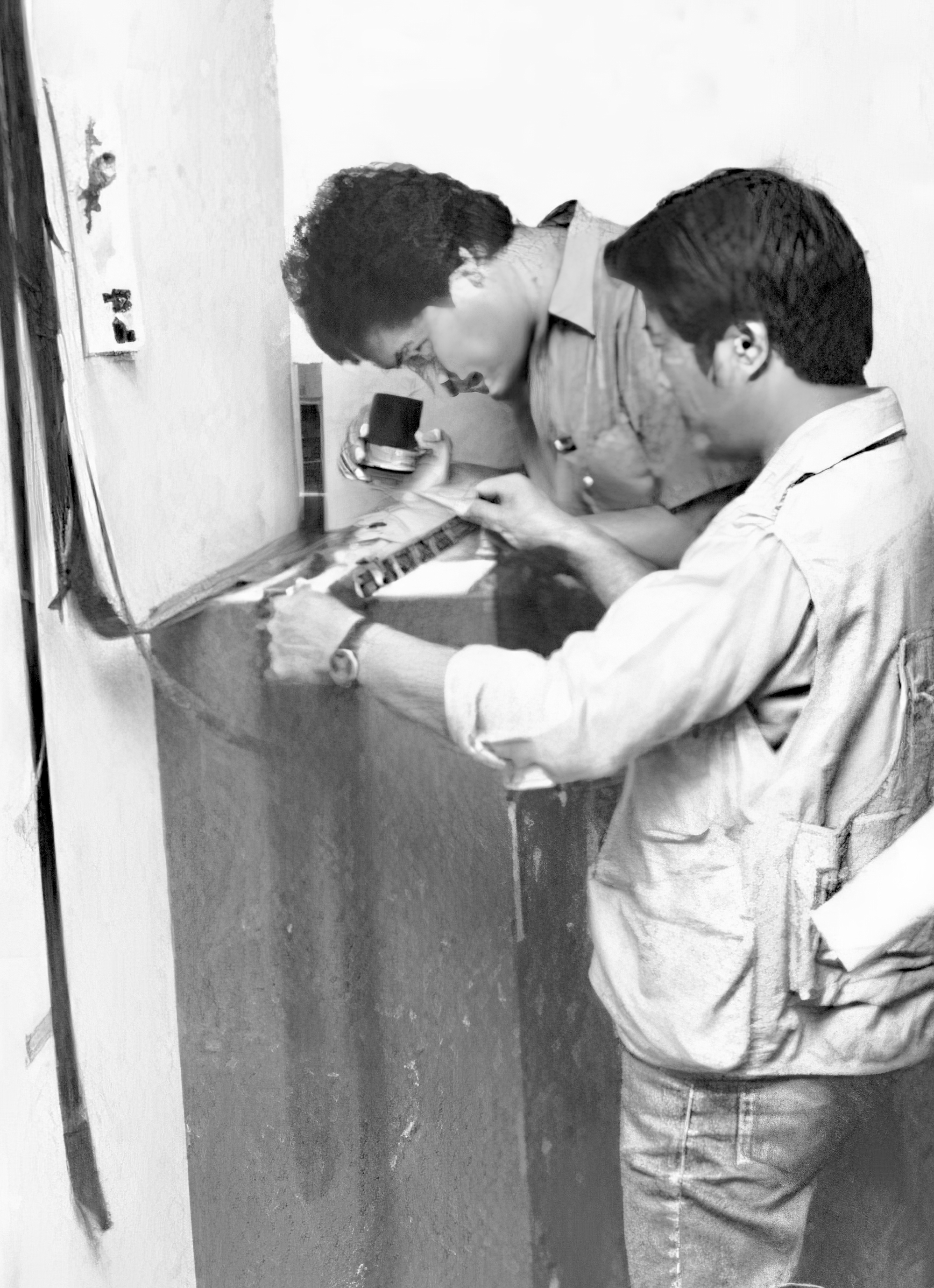
Malaya’s “historic” office was an old house on West Avenue, before it became one of Quezon City’s busiest commercial roads. Located near the gate of Philam Homes, the house’s interior lay-out was deliberately maze-like, intended to confuse military raiders and to buy time for everyone inside the office to escape. A secret exit leads to an adjacent house, owned by a sympathizer. There was a priority list of staff members who were to take the exit.
Malaya’s newsroom did not resemble a typical newsroom. Old office tables of varying lengths and heights were placed side by side. On these desks sat old typewriters with missing letter keys. A backslash would be used in place of the missing letters. Only one typewriter had a complete set of keys and reporters jostled everyday to use it. There were no telephone lines or any communication device one would expect in a daily newspaper.
Says Festin: “If you find it hard to live without a cellphone, try running a newspaper without rotary phone, or any form of communication! But this is exactly how we operated back then.”
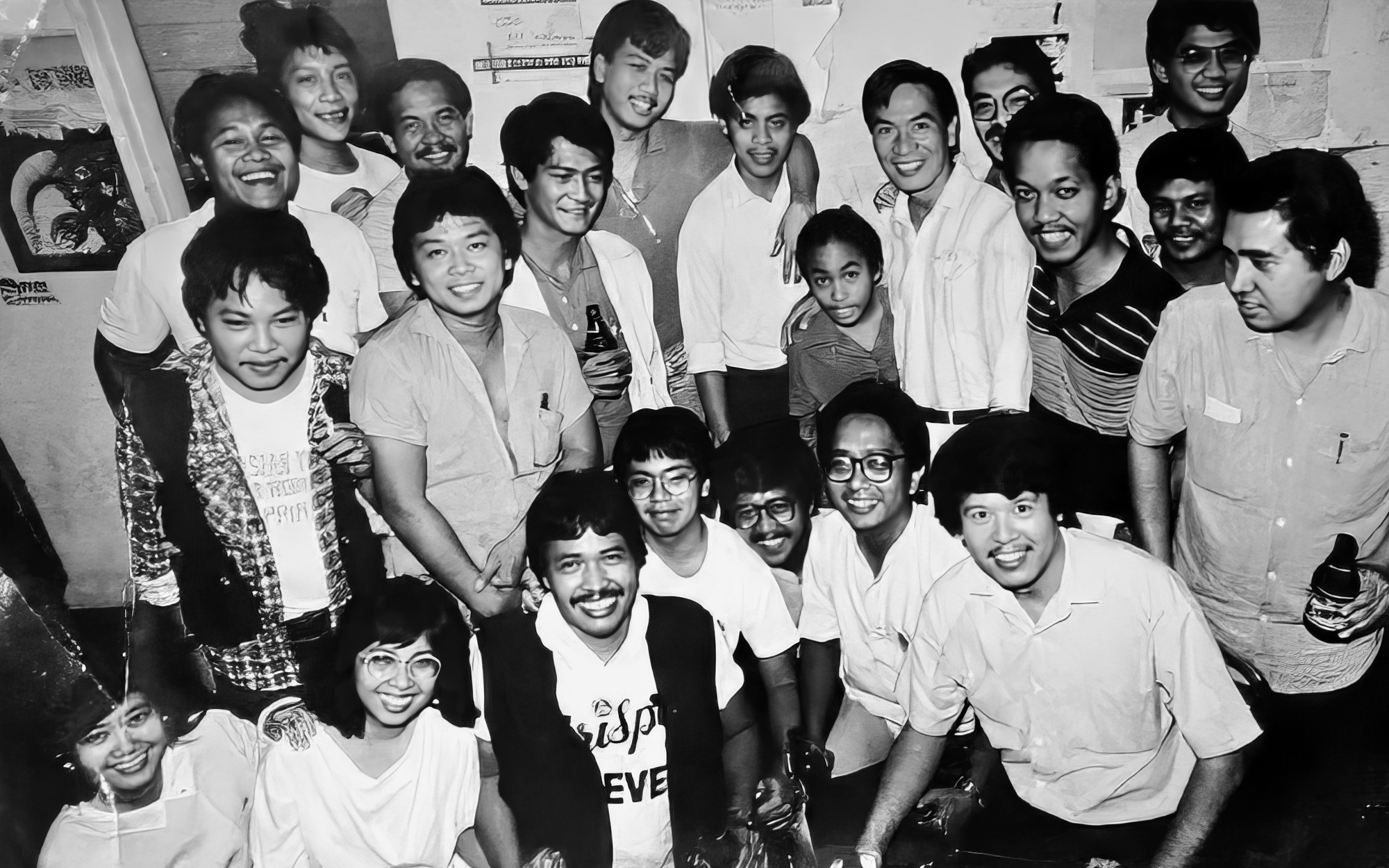
Pounding the Beat
Carlos says reporters had multiple beats to cover. “Coverage was very hectic,” she says.
Aside from covering the Quezon City local government and courts, and the Manila Commission (MMC), the precursor to the Metropolitan Manila Development Authority (MMDA), Carlos was also assigned to cover human rights, human rights lawyers groups, the political opposition, and the Church. The last four beats were not considered regular beats in the other newspapers.
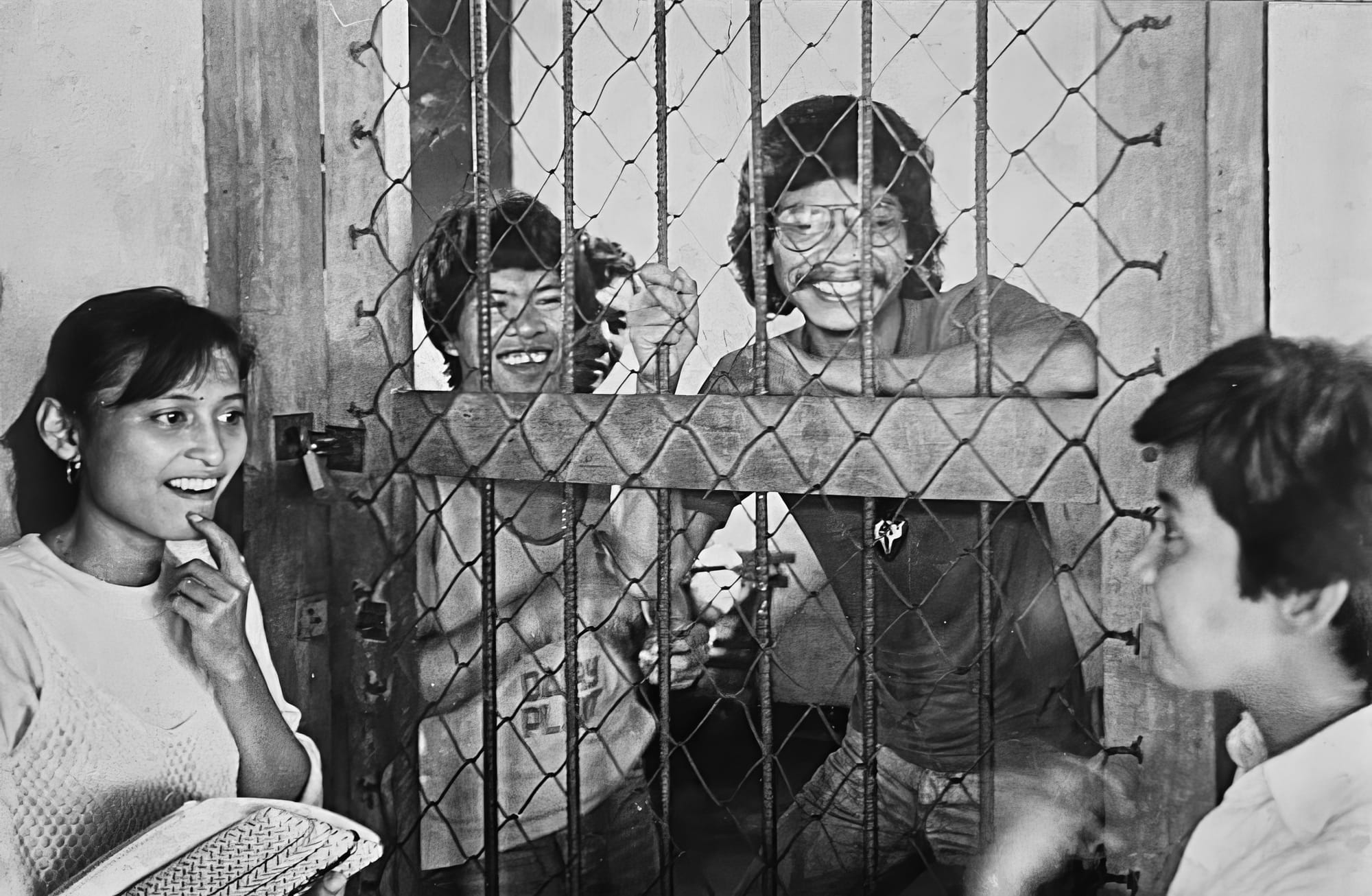
“Malaya lang ang merong ganitong beats,” she said.
Lopez covered the Quezon City police beat. Unlike the other police reporters, he says Malaya reporters did not rely on police blotters. “Hindi kami nag ba-base sa blotter, nag iimbistiga din kami sa mga scenes na pinangyarihan ng mga crime,” he says.
The huge gap in salaries between Malaya and the other newspapers was never an issue. Reporters of mainstream newspapers were getting a minimum of P3,000 a month. Carlos, who was then Malaya’s senior reporter, was receiving P1,200. For correspondents like Gruta and Lopez, they were paid P7 per column inch.
There were also overt threats to their security. Carlos remembers being tailed by an unmarked car as she walked from the Philippine Heart Center to her apartment a few blocks away. Lopez was constantly tailed by military agents for writing stories based on exclusive interviews with rebel leaders. Dossiers were kept on all reporters and editors, who were tagged as communists or communist sympathizers. After the February 1986 EDSA Revolution, they were all “cleared” by the military.
Nose for News
After the Aquino assassination, the depths of disrepute and distrust to which the crony newspapers have fallen would have made it convenient for Malaya to pass off coffeeshop talk as news, or spice up news stories with street corner chismis.
But because of its reputation as a “mosquito press,” and the knowledge that propaganda and security agencies kept a tight watch on its front pages - not to mention the daily movements of its editorial staff - Malaya upheld a more rigorous journalism standard.
True to being a people’s newspaper, leads were provided, mostly on the sly, by ordinary folks - newspaper dealers, policemen, government employees. Even some senior government officials, at the risk of termination, from work or from this mortal plane, gave inside information.
It was the job of the reporters to pursue those leads, to find second-party confirmations, to obtain documents, to verify, verify, verify.
Carlos remembers being approached one day by a former employee of the MMC. “Nakikita ka namin sa MMC. Alam namin Malaya ka,” the employee said. He claimed that agency funds were being used to bankroll the election campaign of the ruling Kilusang Bagong Lipunan (KBL) for the 1984 parliamentary elections. The MMC was headed by former First Lady Imelda Marcos, who was then governor of Metro Manila. The employee arranged a meet up with Carlos, who was joined by another reporter, Noli Alparce. There, he handed over a thick pile of vouchers. Carlos spent days pouring over the documents. It was one of Malaya’s major stories for that year.
Aside from developing stories based on leads, Malaya’s reporters wrote stories that were the product of hard-nosed investigative work long before the term “investigative journalism” became fashionable.
Malaya’s reporters kept their ears to the ground and followed their instincts. That’s how most of the hard-hitting and big stories evolved.
As a police reporter covering the Manila Police District, Joy Gruta had her share of counting dead bodies. But the killings in the capital city intensified following the creation of secret marshals, purportedly organized to fight criminals.
“Araw-araw may nakikita kaming patay, (mga) unidentified until isang araw may breakthrough, may isang identified,” Gruta recalls.
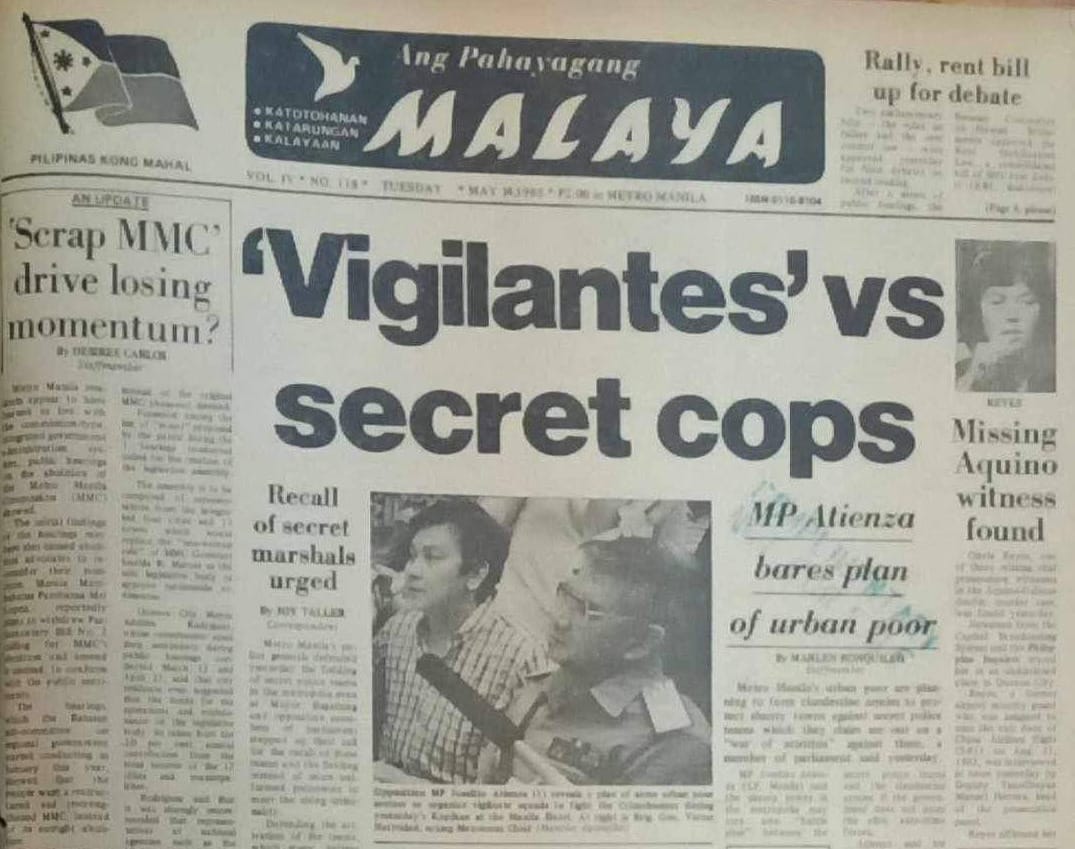
Reporters from the other papers ignored the story, leaving Gruta to go to Tondo alone to check the victim’s identity. He turned out to be a unionist who had been reported missing.
Further digging uncovered a chilling revelation. Several other victims were activists and unionists. And the secret marshals used their “license to kill” to settle personal grudges. “Minsan nakaaway ng biyenan nya, nakaaway ng mga anak nya, tapos pinapatay talaga nila,” Gruta adds.
Carlos remembers overhearing a group of men at a nearby table in a bar planning a trip to Bacolod. They were talking about college girls who have allegedly gone into prostitution. At that time, the sugar industry in Negros was in crisis and residents were economically affected.
Together with Malaya’s correspondent Edgar Cadagat, Carlos interviewed college students who were forced into prostitution to make ends meet. Carlos also reported on a child prostitution ring in Matabungkay.
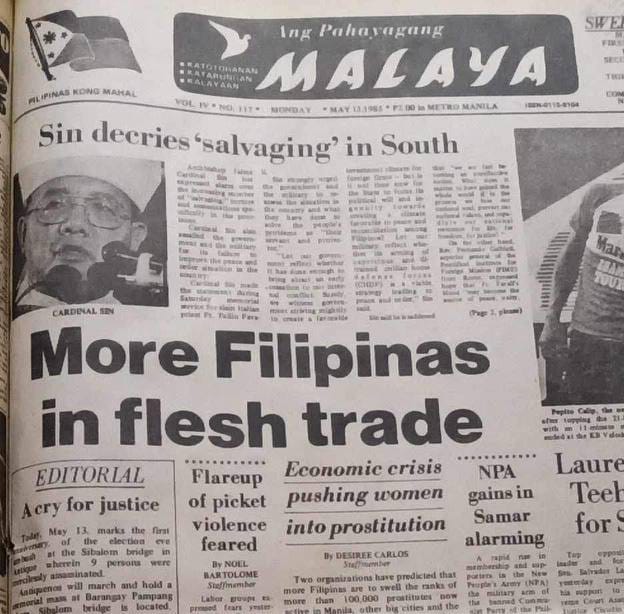
These stories exposed the lie behind the regime’s claim, now being repeated by apologists, that the country’s economy was booming during the Marcos period, she says.
“We were driven to look for stories all the time but not the usual stories. That’s the training I got from Joe,” says Carlos. Reporters didn’t rely on tips alone. “Ang training namin maghanap kayo ng istorya. Kaya nag-iinvestigative talaga. Kaya mahal ko ang Malaya…naging tunay akong journalist noong nasa Malaya ako,” she says.
Malaya’s reporters wrote stories that the crony press ignored, asked questions the authorities din’t want to hear. They looked for stories in the most unlikely places - trash bins, urban poor communities, killing fields.
But to practice real, independent journalism under a repressive regime was also an act of resistance.
Words turned into powerful weapons. They cut and bloodied. They also inspired. The news stories published by Malaya during those years chipped away at the Marcos regime’s bedrock of lies. They chronicled a regime in turmoil, a nation in ferment. They gave the people the information they needed to make sense of their lives, and to take action.
Malaya’s pages gave both heat and light - the unfolding drama of a regime in free fall and a new nation emerging, and the unblemished facts that emboldened a people to say enough is enough.
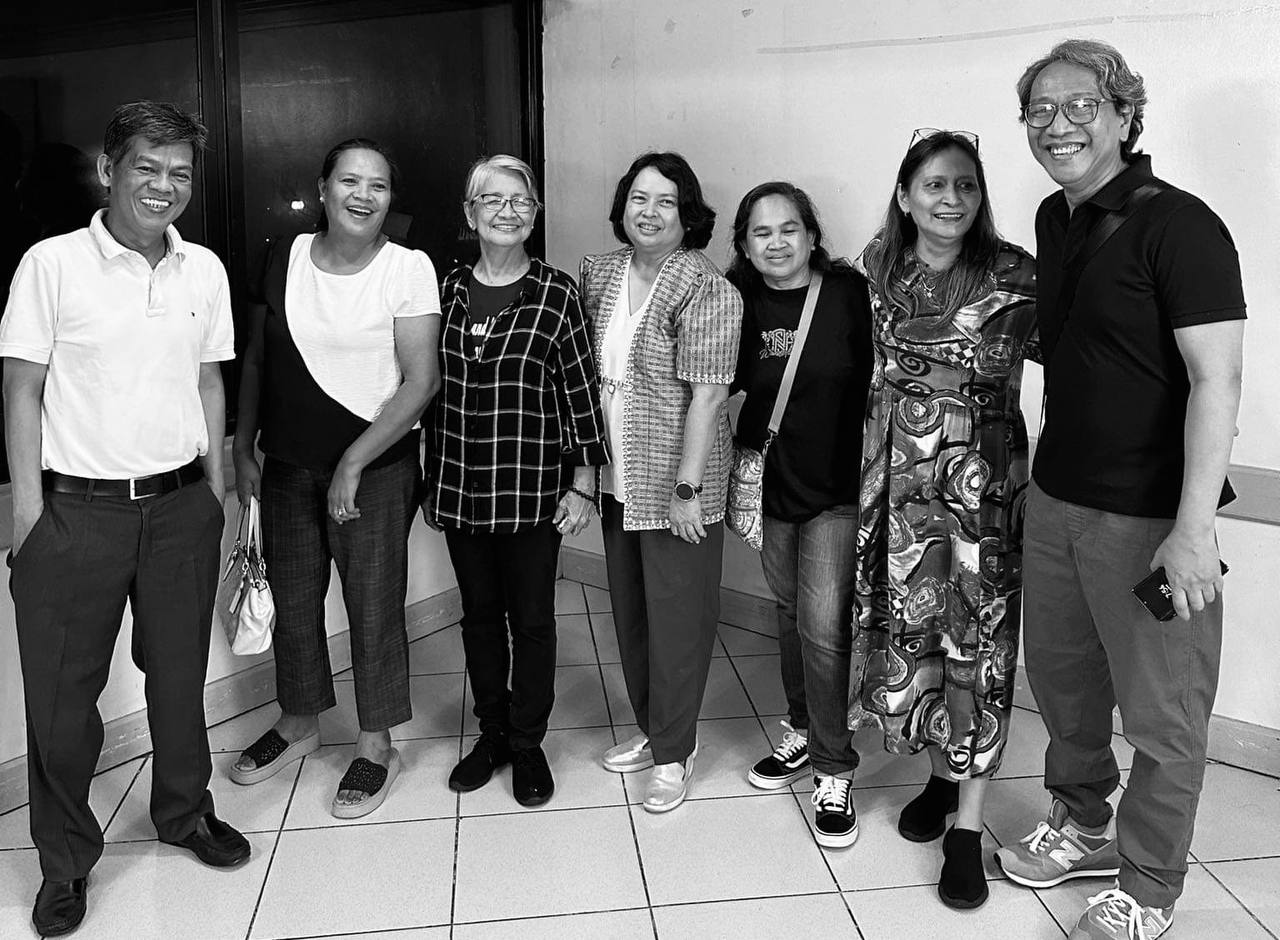
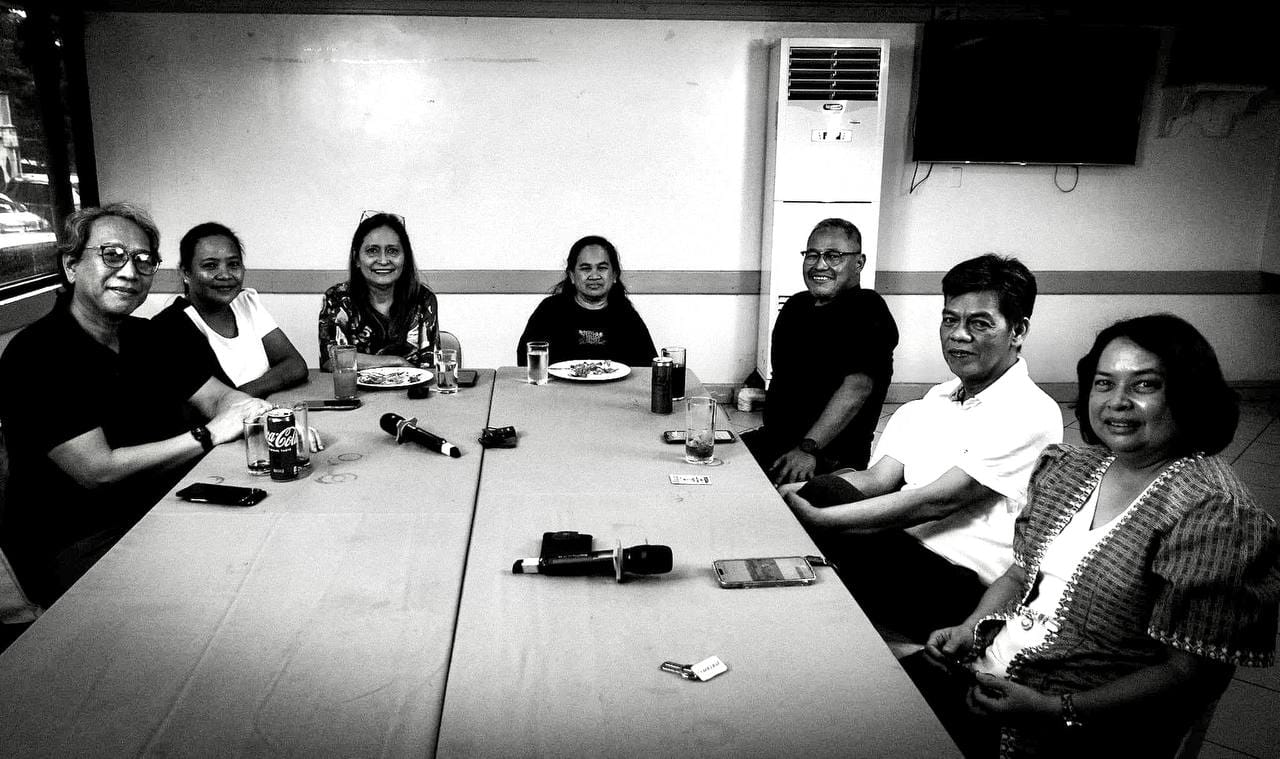
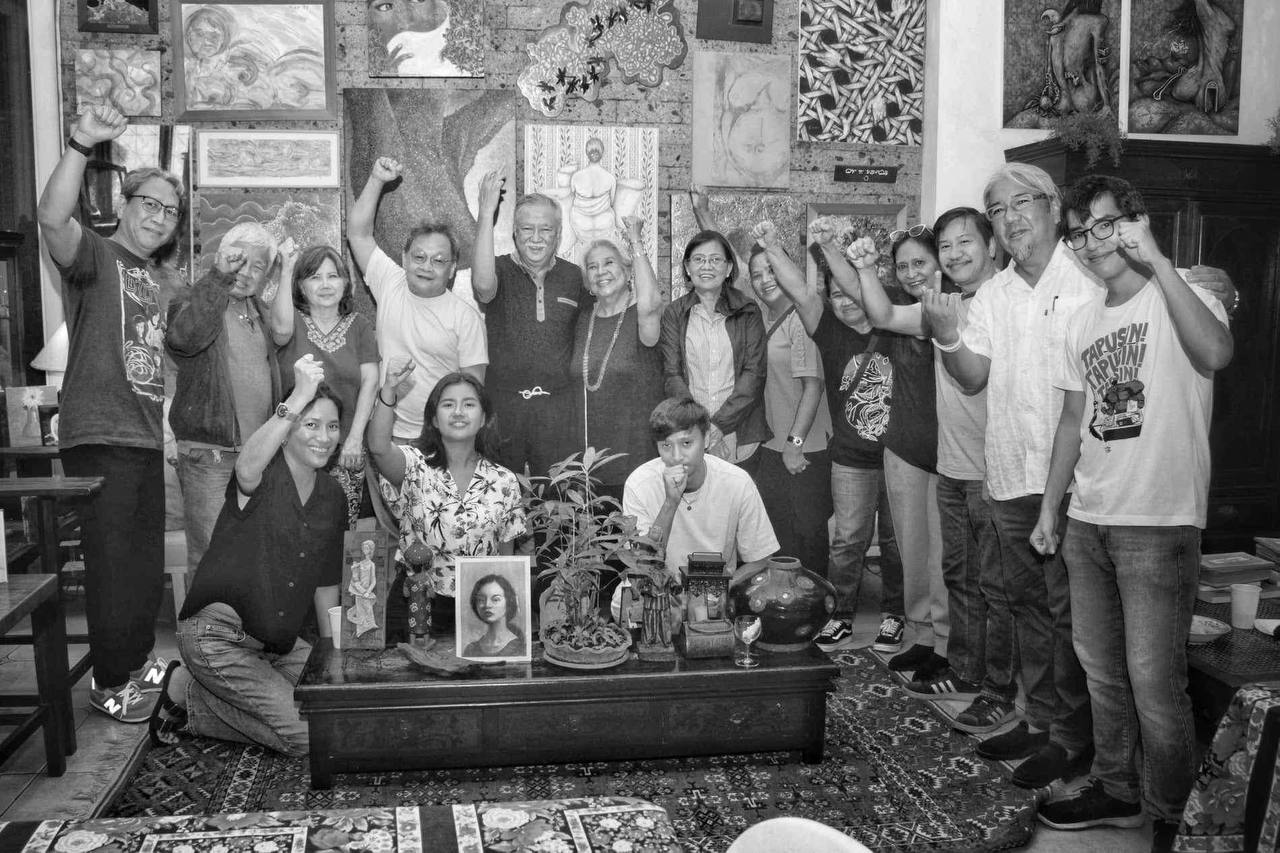
If you liked what you just read and want more of Our Brew, subscribe to get notified. Just enter your email below.

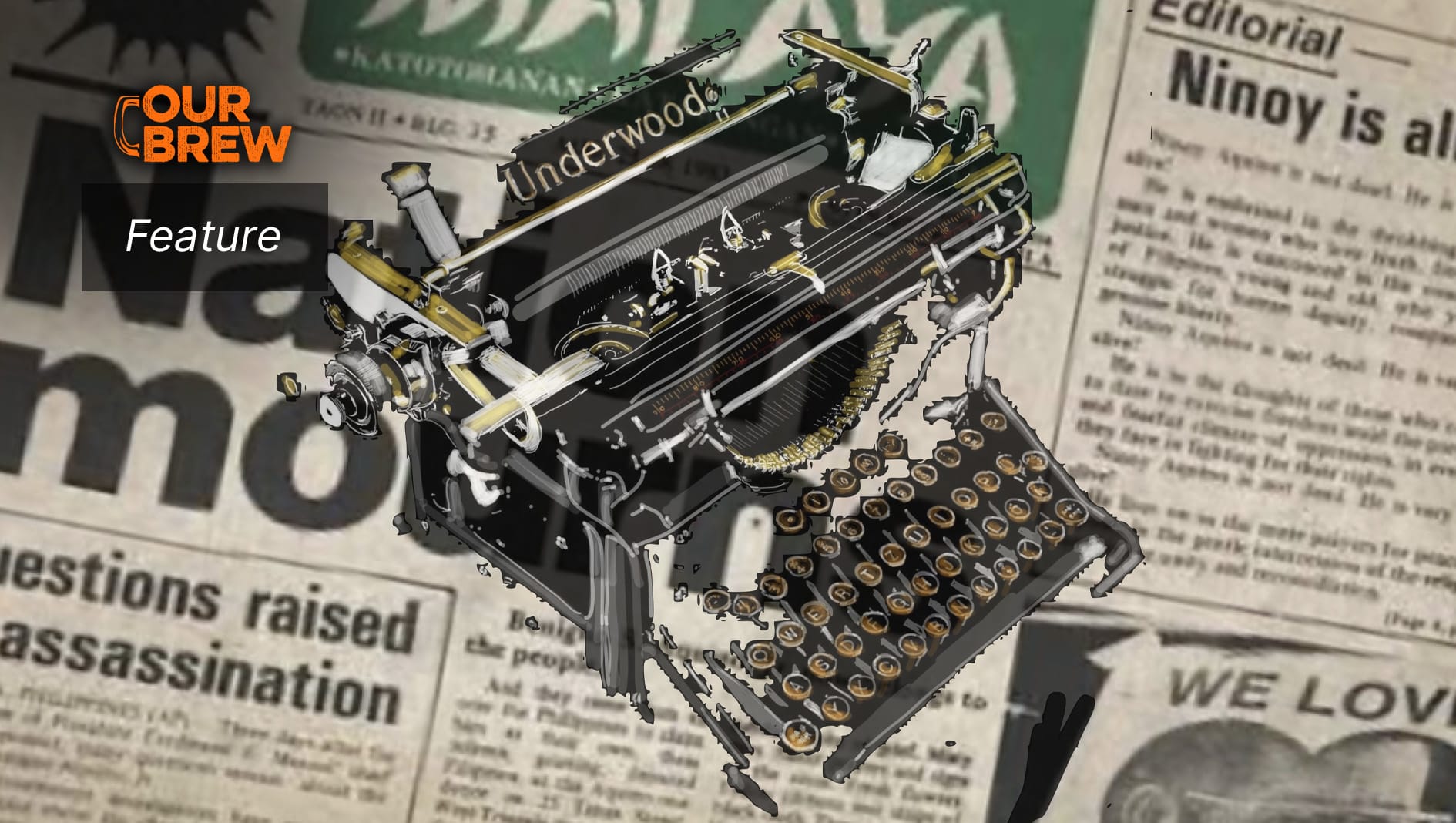
Related Posts
ChatGPT Facepalms, Responds to Bill Gates
Jun 24, 2025
Shifting Lines of Power in the 2025 Philippine Midterm Elections
May 22, 2025
The Our Brew Articles You Loved Most this Year
Jan 14, 2025